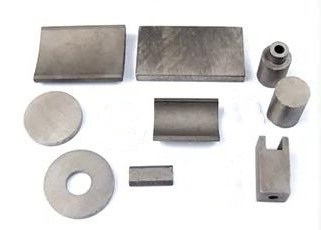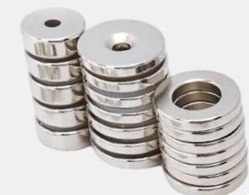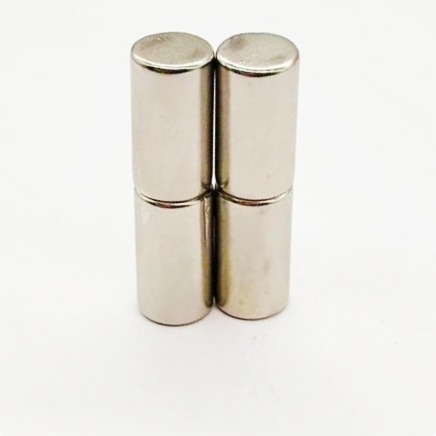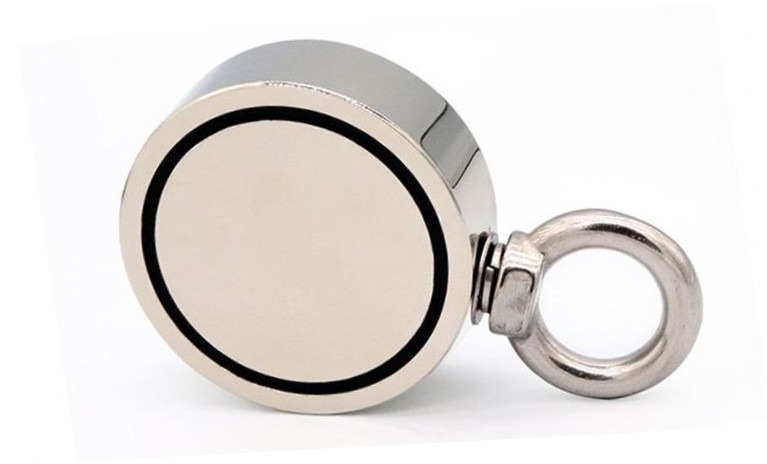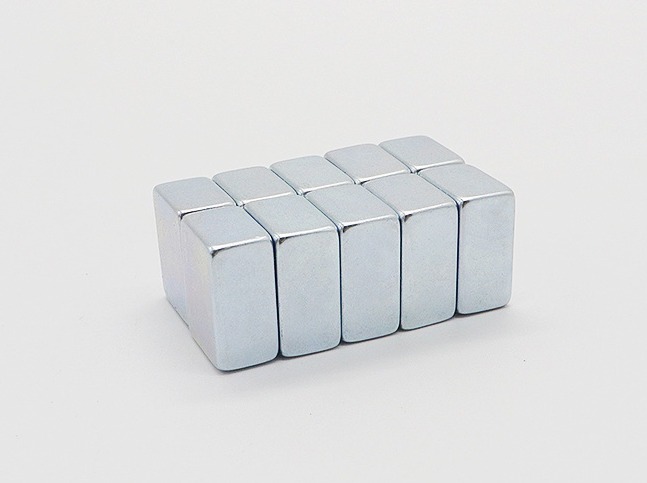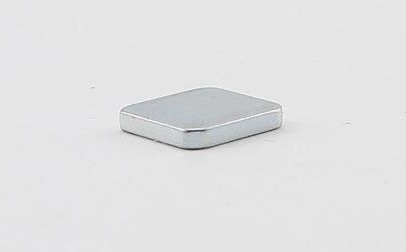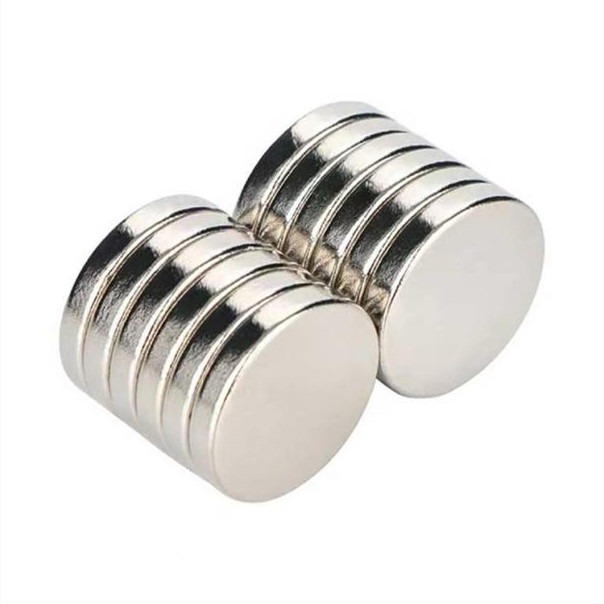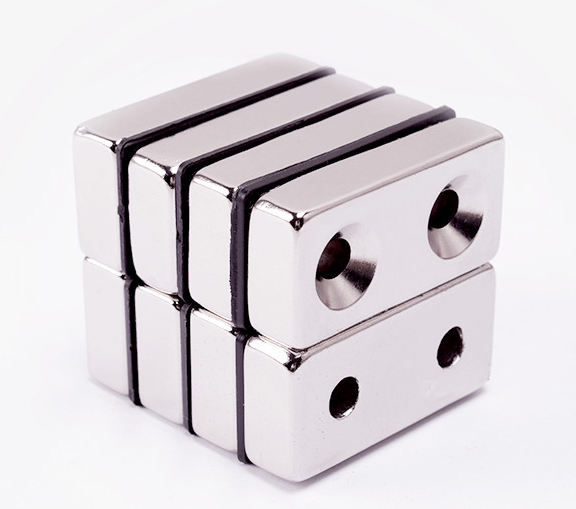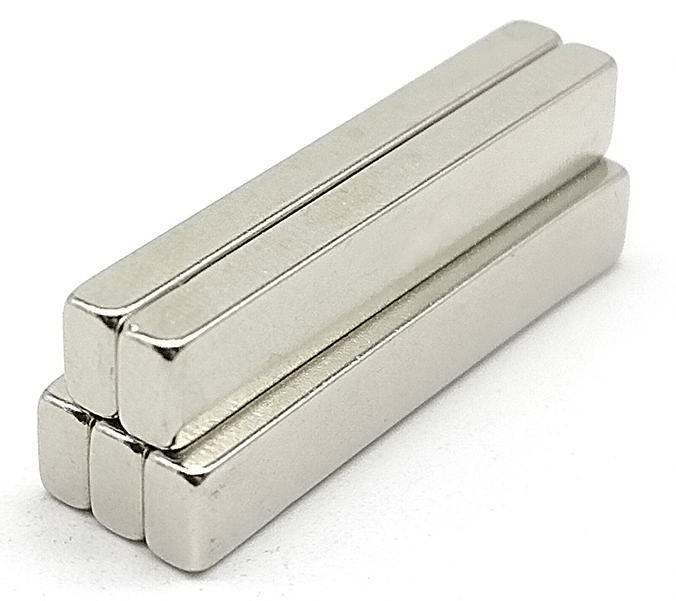What is the Difference Between Neodymium Iron Boron Magnet and Samarium Cobalt Magnet?
This article will compare the differences between rubidium iron boron magnet and samarium cobalt magnet from the aspects of appearance, composition, structure, performance, price, surface treatment, application, etc.
1. Appearance difference between neodymium iron boron magnet and samarium cobalt magnet
The appearance of the semifinished product is basically indistinguishable.
In the case of finished products:
2. Difference between NdFeB permanent magnet and SmCo composition
- In Nd-Fe-B permanent magnets, rare earth metal neodymium accounts for about 29%~32.5%, metal element iron accounts for 64%~69%, and nonmetal element boron accounts for 1.1%~1.2%. In addition, a small amount of dysprosium, terbium, niobium, copper and other elements are added.
- SmCo magnet, take 2:17 as an example. The rare earth metal samarium accounts for 23%~28%, the metal cobalt accounts for 48%~52%, the metal element iron accounts for 14%~17%, and there are a small amount of copper, zirconium and other elements.
3. Difference between NdFeB magnet and SmCo crystal structure
SmCo magnet and NdFeB have very similar crystal structure.
SmCo crystal structure is hexagonal, while NdFeB is tetragonal. Both types of structures endow rare earth magnets with highly oriented magnetism. These crystal structures tightly concentrate the magnetic field in the north-south direction. When material properties are so concentrated in one direction, it is called anisotropy.
4. Comparison of magnetic properties between NdFeB and SmCo
The magnetic property of NdFeB magnet is stronger than SmCo magnet, also known as magnet king or strong magnet.
5. Temperature resistance comparison between NdFeB and SmCo
The temperature resistance of NdFeB is not as good as that of SmCo magnets. SmCo magnets belong to high temperature resistant magnets and are suitable for high temperature applications.
NdFeB: the maximum working temperature is 220 ℃, and the Curie temperature of NdFeB is 320 ℃ – 460 ° C.
SmCo magnet: the maximum working temperature can reach 350 ℃. When the working temperature is above 180 ℃, its comprehensive magnetic performance parameters exceed those of NdFeB permanent magnetic materials. The Curie temperature of samarium cobalt is 700 ℃ – 800 ℃.
6. Price comparison between neodymium iron boron magnet and samarium cobalt
The NdFeB magnet has the highest iron content, and other rare earth elements account for a small proportion, so the price of NdFeB will not be too expensive. The content of samarium and cobalt in samarium cobalt magnets accounts for 70-80%, which also leads to higher costs. Compared with the price of NdFeB permanent magnet and SmCo permanent magnet with the same performance and size, the price of SmCo magnet is higher than that of NdFeB.
7. Stability comparison between neodymium iron boron permanent magnetic material and samarium cobalt
NdFeB:
- The remanence temperature coefficient is relatively large. The higher the temperature rises, the lower the remanence.
- NdFeB must be electroplated, otherwise it is easy to be oxidized, corroded and weathered.
SmCo:
- The remanence temperature coefficient is very low. At the same temperature, the demagnetization of samarium cobalt is much less than that of neodymium iron boron.
- Generally, samarium cobalt does not need electroplating, but if the use environment is harsh, the service life after electroplating is longer and more beautiful.
8. Processing characteristics of neodymium iron boron magnet and samarium cobalt
Both materials are very brittle, and NdFeB magnets are relatively easy to machine.
9. Maximum magnetic energy product of NdFeB and SmCo
The maximum magnetic energy product of neodymium iron boron magnet is 52M, while that of samarium cobalt neodymium iron boron magnet is 32M. It can also be seen that the magnetic force of neodymium iron boron is much higher than that of samarium cobalt magnet.
10. NdFeB and SmCo surface treatment
Neodymium iron boron magnet: It contains a lot of iron and neodymium, and its surface is easy to be oxidized and corroded, so it generally needs electroplating treatment.
SmCo magnet: No surface treatment is required because its composition contains about 65% cobalt. Cobalt is the main component of stainless steel, so it is easy to see that cobalt is the main reason why samarium cobalt magnets have such excellent corrosion resistance.
11. Differences between NdFeB magnets and SmCo magnets in application fields
NdFeB magnet:
It is very suitable for powerful motors and generators, or where miniaturization is the main driving force.
The following are common applications of NdFeB magnets:
1. Electroacoustic applications, such as loudspeakers
2. Automobile electric drive motor
3. Automobile accessories motor
4. Mobile phone
5. Sensor
SmCo magnet:
Typically used for heavy duty high temperature applications:
1. Traction motor of railway locomotive
2. Heavy industrial motors and generators
3. Marine motor and generator
4. National defense related motor
5. Downhole application of oil and gas
Summary
Compared with NdFeB magnets, SmCo magnets have better performance than NdFeB magnets in high temperature and corrosive environments. Neodymium iron boron magnet has stronger magnetic field strength, is the highest BHMax in any permanent magnet today, and its price is cheaper than samarium cobalt.
KENENG is able to produce both types of magnets and has extensive experience. We can serve customers from all over the world.

